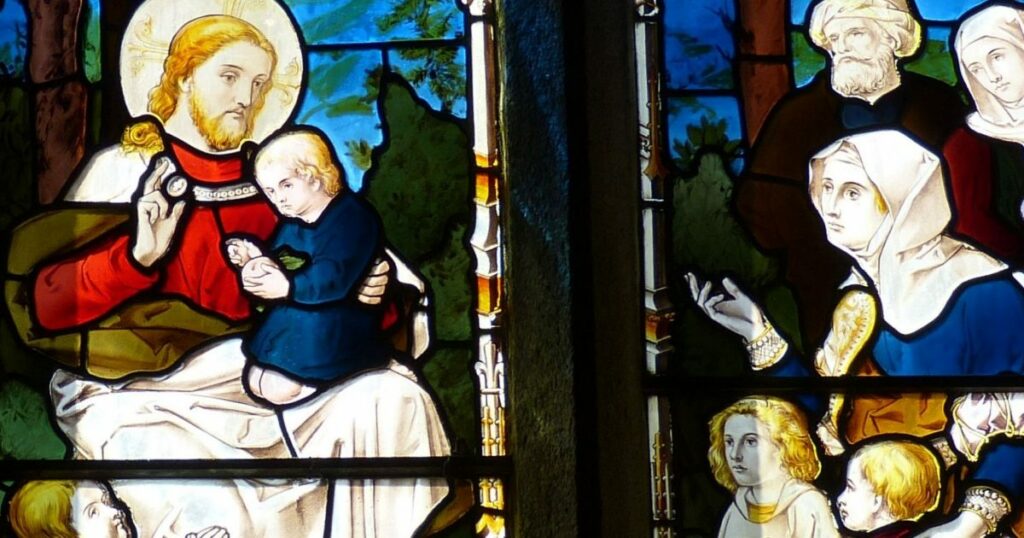An art reflection by Kelly Schumacher (Uffenbeck) of Agnus Dei Liturgical Arts on Tasha Tudor's "A Time to Keep." This is one installment of a monthly series providing reflections on works of art and music from a Lutheran perspective.
One of the many gifts we can offer our families is the gift of beauty. I am writing this while holding my daughter as she sleeps. There are so many things I want to teach her about life, love, theology, music and art. One of the artists I have been drawn to of late is Tasha Tudor: I love her romantic illustrations of family life. They combine old-fashioned charm with whimsy and nostalgia, showing the joy and beauty to be found in marriage, family, children and home life.
Tasha Tudor’s book A Time to Keep is a collection of illustrations inspired by Tudor’s own childhood family traditions during the holidays, revolving around Christmastime. The book starts with a little girl asking her grandmother what life was like when her mother was a little girl.
The title of the book references Ecclesiastes: “To every thing there is a season, and a time to every purpose under heaven … a time to keep” (Eccl. 3:6 KJV). In Tudor’s book, the time we keep is about creating and keeping memories with our family. We live in a fallen world, where so many things are temporary. Family traditions have great value in that they show our children that our lives here do matter — that our seemingly mundane and fleeting lives can be a reflection of the eternal life we are meant for. Thus, fostering memories and traditions with our families is a precious act of service. Tasha Tudor’s art reflects her desire to make days set apart and special for her family.
Tudor’s book contains many wonderful illustrations on this theme, but I would like to highlight a particular one in the Christmas section of Tudor’s book. This section depicts a family walking in the woods, following a path of lit candles, surrounded by pine trees. In this illustration, they have arrived at a small “creche,” or Nativity scene. The Nativity scene is small and humble, nestled in the corner.

This scene can be interpreted simply: a family admiring the baby Jesus. Yet it is also rich with religious symbolism. The heavy pine tree border reminds me of the wood of the cross that Jesus would bear for the sins of the world. The candles make me think of the Advent wreath candles celebrating each Sunday leading to Christmas with anticipation of the birth of Jesus. The little children remind me of how Jesus came not as a big strong powerful king but as a small child, humble and lowly in a manger. The adults who carry the children make me think of the parents who brought their little children to Jesus, wanting them to be blessed by the Lord. One of the vocations parents have is to bring our children to Jesus through prayer, devotions and attending the Divine Service.
As I look at this image, a verse from one of our Christmas hymns comes to mind:
Softly from His lowly manger Jesus calls One and all, "You are safe from danger. Children, from the sins that grieve you You are freed; All you need I will surely give you." —LSB 360, "All My Heart Again Rejoices"
Even the sweet little corgi in the illustration (Tasha Tudor loved corgis!) has visited the baby Jesus. I cannot help but think of the words Martin Luther is said to have spoken upon the death of their own family dog: “Be thou comforted little dog, at resurrection thou shalt have a golden tail!” All of creation and things that are seemingly mundane can carry theological symbolism if you look hard enough. Each part of creation can point us to our Lord and Savior Jesus Christ, King of Creation, Son of God and Son of Man. As the mundane reflects the divine, the dual nature of Christ— completely human and completely divine — is made manifest.
Family traditions have a profound influence on Tasha Tudor’s art. Tudor’s illustrations remind me of the importance of the culture we create in our homes, as we seek to instill faith in Christ in our children’s hearts and memories.
I encourage you to think about your own holiday traditions in your home. Both secular and sacred traditions have a way of unifying us as they are repeated again year after year in our homes. What values can you teach and share with your children through traditions?
My mind as a mother and artist is brimming with ideas on how to celebrate holidays and Holy Days with my husband and daughter. How do you celebrate and teach your own children? What traditions have you passed down to your family that you desire to keep and treasure through further generations? Most of all, I hope and pray that you pass on the legacy of faith in Christ to your children in their Baptism. May you and your family always keep that as the most precious gift of all.





